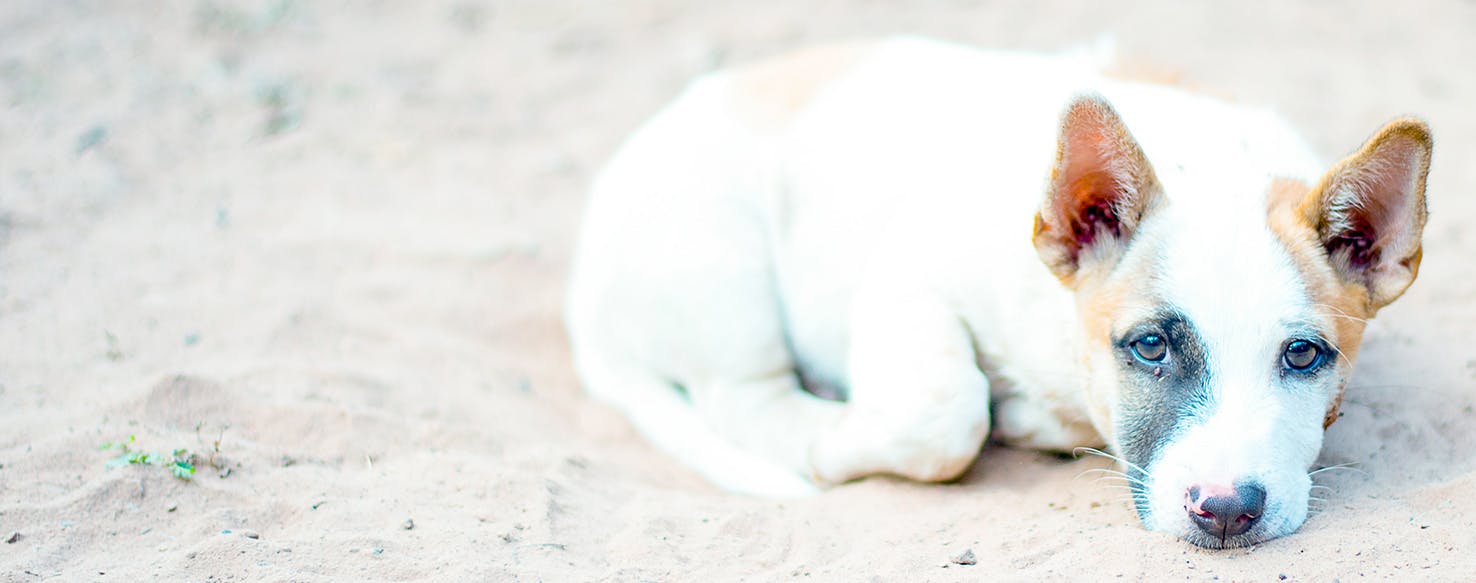Not many have to deal with sand fleas because not everyone lives near sandy beaches or marshes. Sand fleas in the southern part of the United States are also called no-see-ums because they are clear and tiny. But they can do some damage. If you've ever spent a day at the beach, you may recall itchy feet and ankles as sand fleas jump onto your skin and nibble away, feeding on your blood. They typically do not follow you home, however; they prefer to live in these soft, sandy, moist areas instead of your carpet as regular common fleas live. If you've ever taken your dog to the beach, you may worry about sand fleas being on your dog once you arrive home.
Can Dogs Get Sand Fleas?
YES!
While you are in a sandy or marshy area with your pet dog, whether on vacation or if you live near or on a beach, you should know that sand fleas can feast on your dog as well as on you. Sand fleas typically burrow into the skin on your dog to feed on their flesh and blood. Sand fleas can also cause skin problems and infections in your dog. So, if you live at the beach and your dog often visits that gorgeous beach sand, read on to learn how to help your dog deal with sand fleas.
Does My Dog Have Sand Fleas?
If your dog is vacationing at the beach, lives on the beach, or visits the beach often it is very likely that your dog has been affected by sand fleas.
Sand fleas manifest themselves on your dog's skin as tiny black dots. You may see bumps or small rashes on your dog's skin as you would if your dog were bitten by mosquitoes. Your dog will, of course, be scratching incessantly.
How Do I Treat My Dog’s Sand Fleas?
If you suspect your dog has sand fleas, see your veterinarian. Your vet will need to pluck the tiny crustaceans from your dog’s skin and fur. Your veterinarian may also recommend a dip or bath using a special flea shampoo. Sand fleas are crustaceans, so they look very different than fleas that we normally associate with household pets. These fleas attach their bodies to pets and fabrics and fur, fighting back when we try to remove them. As with any kind of flea, you will want to clean your entire home including breeding grounds such as carpet, fabrics, bedding, and your animals. Salt has been known to dehydrate fleas, and some pet owners sprinkle salt on their fabrics and carpets, allowing it to sit for 24 hours before vacuuming. You may want to talk to your veterinarian about preventive care if your dog frequents areas such as beaches or marshes or if you live in an area where sand fleas are prevalent.
How Are Sand Fleas Similar in Dogs and Humans?
Sand fleas can be annoying and bothersome for any species they affect. If not treated, anyone with sand fleas can be bitten and infected rather quickly. The symptoms of sand fleas are similar for all animals and people. You and your dog may experience mosquito-like bites, itching, swelling, fever, or even rashes. Most sand fleas don't typically feast on mammals. Sand fleas typically use water animals as their prey.
How Are Sand Fleas Different in Dogs, Humans, and Other Animals?
Because sand fleas typically prey on water animals, those are the only animals who tend to react differently than domestic dogs and humans, who can get treatment and rid themselves of the sand fleas. Sand fleas, if left untreated, are beyond pesky, especially to their waterborne prey. Sand fleas typically find a water animal to attack, stay on that animal, multiply, and feast until the animal dies. This is not usually common with domesticated dogs because a dog with sand fleas is treatable.
Case Study
A mountain dog whose owners were used to dealing with typical fleas and ticks went on vacation to the beach one weekend with the family. After the second day of playing fetch at the beach, swimming in the water, and lounging around in the warm sand, the dog became irritable, scratching at his skin incessantly overnight. At first glance, the owners didn't notice anything out of the ordinary. Once they arrived back in their mountain home, they took their dog to see their veterinarian who, with the help of a trained eye and a magnified looking glass, was able to spot the clear crustaceans known as sand fleas. With tweezers, the veterinarian was able to pluck them out of the dog's fur, give the dog a bath in the office, and instruct the owners to wash and use hot water to sanitize everything they had brought back from the beach. This was a lucky dog and a lucky family because their house was not infested with fleas.
Removing sand fleas from your dog's fur can be expensive to treat. If you suspect your dog is at risk of getting infested with sand fleas,
start searching for pet insurance today. Brought to you by Pet Insurer, Wag! Wellness lets pet parents compare insurance plans from leading companies like
PetPlan and
Embrace. Find the “pawfect” plan for your pet in just a few clicks!


